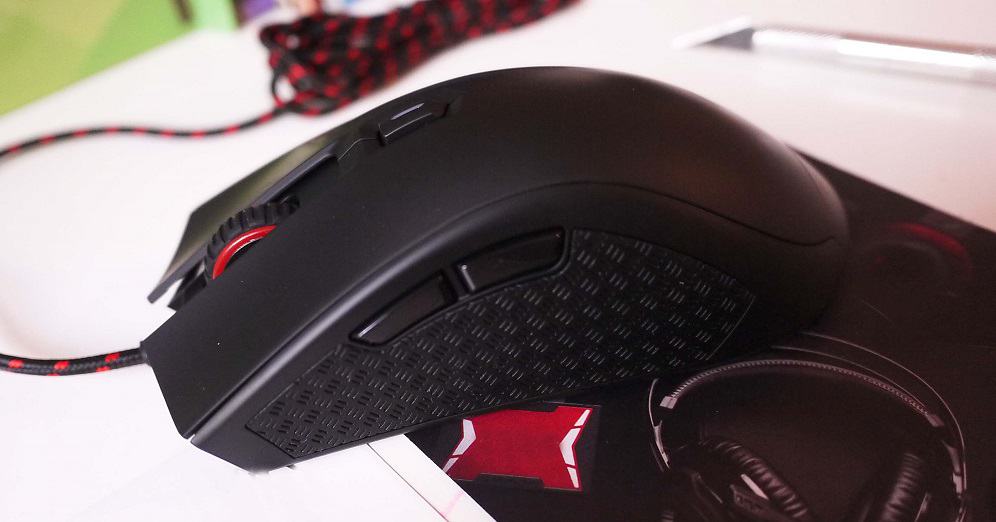Mouse polling rate is often less understood than other mouse related metrics like sensitivity and DPI. However, it is an equally important feature especially for people who use their mouse for specialized tasks.
Mouse polling rate refers to the frequency of translating mouse movement into mouse input. A higher polling rate will result in smoother mouse movement due to the greater frequency of input delivery.
This article will define polling rate and differentiate polling rate from sensitivity and DPI. It will also explain the benefits of a higher polling rate and discuss whether a mouse with a high polling rate is always deemed better.
What is Mouse Polling Rate?
Modern optical mice use a light source as a vantage point and a small camera to detail the movement of light as the user moves the mouse.
This information is sent to the computer as input and is translated into the cursor movement on the screen. Polling rate, or report rate, refers to the frequency of reporting the position of the mouse which affects the fluidity of the mouse input on the computer.
Frequency is measured using the unit "hertz"(hz). A higher hertz unit means more frequent occurrences. The standard polling rate of modern optical mice is 125hz. This number suggests that the mouse reports its position to the computer 125 times per second, which translates to around 1 report every 8 milliseconds.
As hertz increase, polling rate increases. Greater polling rates results in less input lag or the amount of time for every subsequent mouse input.
Polling Rates and Gaming

Gaming mice are characterized by their high polling rates. A high polling rate increases the responsiveness of the mouse to user movements and translates to more fluid mouse input on the computer.
Mice that feature higher polling rates are usually customizable. Some mice also have dedicated switches/buttons on the mouse to change polling rates.
At a bare minimum, gaming mice typically start at a 500hz polling rate which translates to a mouse input for every 2ms, which is a significant leap from 8ms for 125hz.
The difference in milliseconds is significant for gamers because a person using a mouse with a faster polling rate will theoretically have a more fluid response to the in-game stimulus. It also directly affects the gamer's feel of the game as he translates his actual response time to in-game response time.
Polling Rate vs DPI and Sensitivity
Polling rate is often confused with dots per inch (DPI) and mouse sensitivity. DPI refers to the translation of movement from the mouse to the cursor in terms of distance.
A higher DPI on a mouse translates to increased movement of the cursor. To illustrate, a mouse that is set to 800 DPI will move the cursor 800 pixels for every inch of mouse movement.
Different DPI settings are used for different activities. Precision aiming the cursor requires a lower DPI. Meanwhile, aiming the cursor on various ends of the screen using minimal mouse movements requires a higher DPI.
Sensitivity works similarly to DPI. However, DPI is a hardware setting or capability which can be switched directly on the mouse itself using a dedicated button. Sensitivity, on the other hand, is a software adjustment on how far the cursor moves with respect to the mouse movement.
Choosing the correct DPI for a particular activity includes consideration for various factors including the type of application or game, the display resolution, and comfortability for the user.
A high DPI setting will be beneficial for people who use 4K resolution as this translates to a larger screen real estate. This will allow the user to move the cursor across the monitor without moving the mouse extensively across the desk/mouse-pad.
Conversely, a high DPI can be detrimental for specific games or applications which require precision more than speed. It will respond aggressively against small mouse movements. A low DPI setting will therefore be usual for graphic designers who want to make a small adjustment on their designs.
Mouse polling rate, however, is simpler than DPI and sensitivity. Unlike DPI, a mouse with a higher polling rate is categorically better than a mouse with a slower polling rate. A higher polling rate will not affect the distance covered of the cursor but it will affect its fluidity of movement.
Benefits of High Polling Rates
A mouse with a higher polling rate will produce more precise movements and can also help improve accuracy. It minimizes potential mistakes when hitting headshots in first-person shooter (FPS) games or potential misuse of skills in multiplayer online battle arena (MOBA) games.
A higher polling rate can also help creative designers translate their mouse movements more precisely to the cursor movement which makes it easier to make minute design adjustments. Using a normal 125hz mouse will incur more input lag which can be felt as a delay in cursor movement with respect to mouse movement.
A high polling rate, however, may not be as useful for basic computer tasks such as using Excel or browsing the web. It may feel more seamless but the benefits are less likely to be felt.
Are Higher Polling Rates Always Better?
A higher polling rate will always translate to an improvement in cursor movement for more smooth and fluid movement. However, the degree of improvement depreciates as polling rates become higher.
The biggest recognizable difference in fluidity of movement comes from upgrading a conventional 125hz mouse to a 250hz mouse. The 4ms decrease in input lag significantly improves the translation of mouse movement into cursor movement.
Upgrading from a 250hz to 500hz, however, translates to only a 2ms improvement in fluidity. Moreover, upgrading from 500hz to a 1000hz will only improve fluidity by 1ms.
These millisecond improvements can hardly be felt. However, professional gamers often err to buy a mouse with a polling rate of 1000hz.
It is also important to consider that mice with higher polling rates will consume more CPU and resources. As mouse polling rates become higher, CPU resource consumption also becomes higher.
Granted, these days as hardware has considerably improved, this is less of an issue as it was a decade ago. With that said, the CPU is typically the bottlekneck in scenarios where 1000hz polling rates result in dramatic performance drop-offs.
A higher polling rate may even be incompatible for certain games and applications. For example, FPS games Rainbow Six Siege and Crossfire are only compatible with polling rates of 125hz. Using a mouse with a higher polling rate will result in unsynchronized mouse and character movement and also cause micro-stutter.
Final Thoughts
The mouse polling rate is an important aspect of improving mouse responsiveness and reducing input lag that can be felt for games and applications that require keen attention to detail.
However, the perceivable benefits of polling rate depreciate as it increase, contributing only to 1-2 milliseconds of improvement in exchange for greater CPU resource and power consumption.

